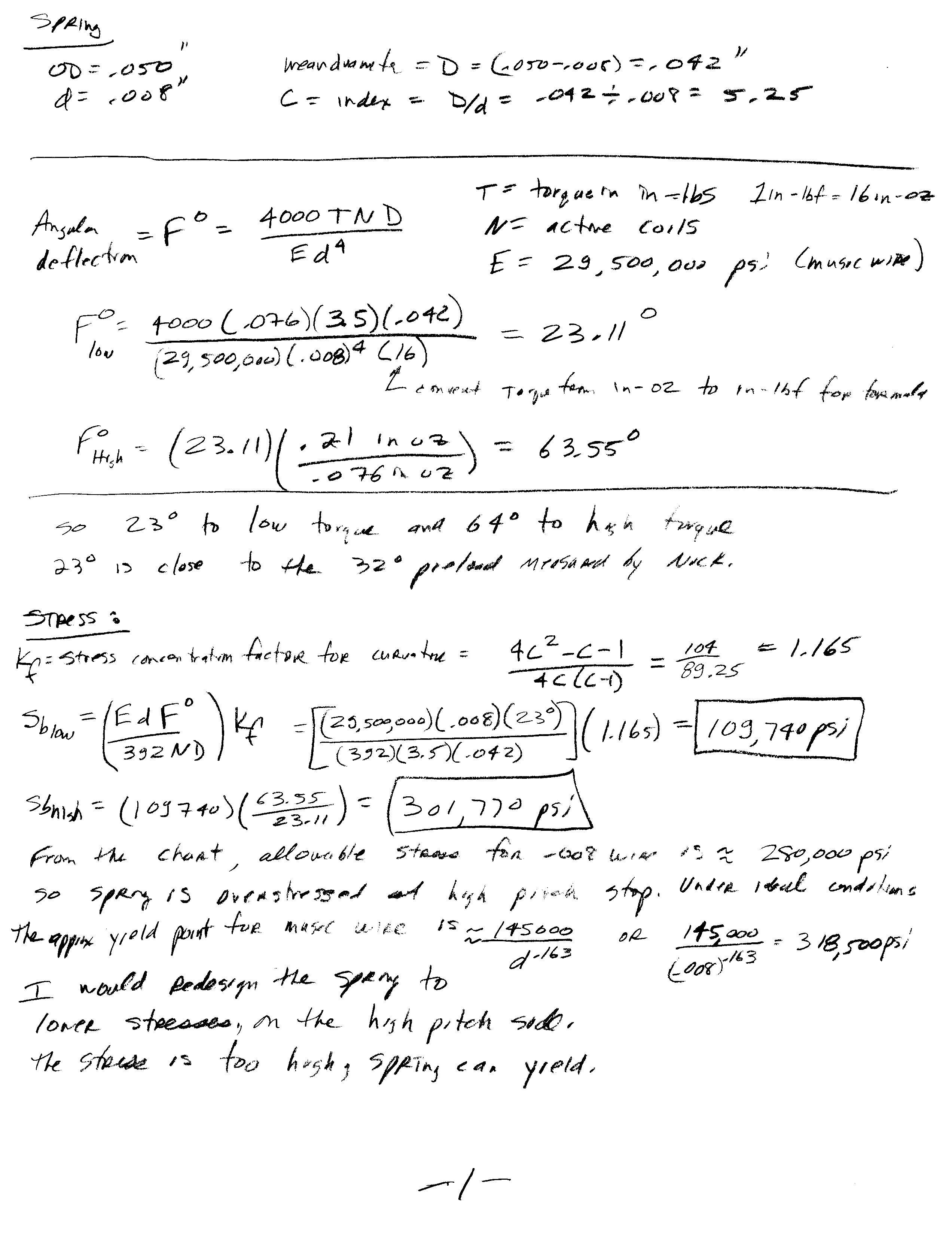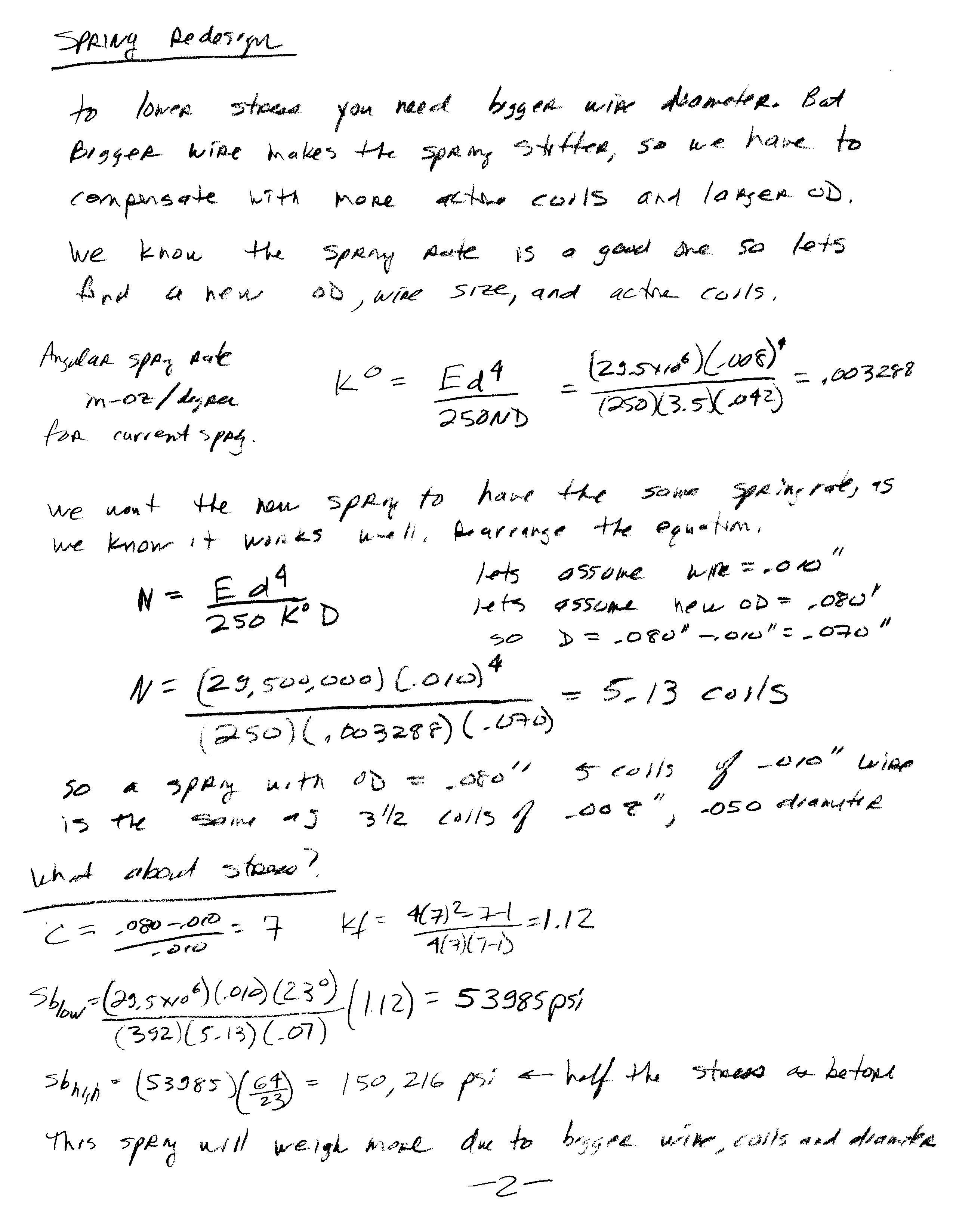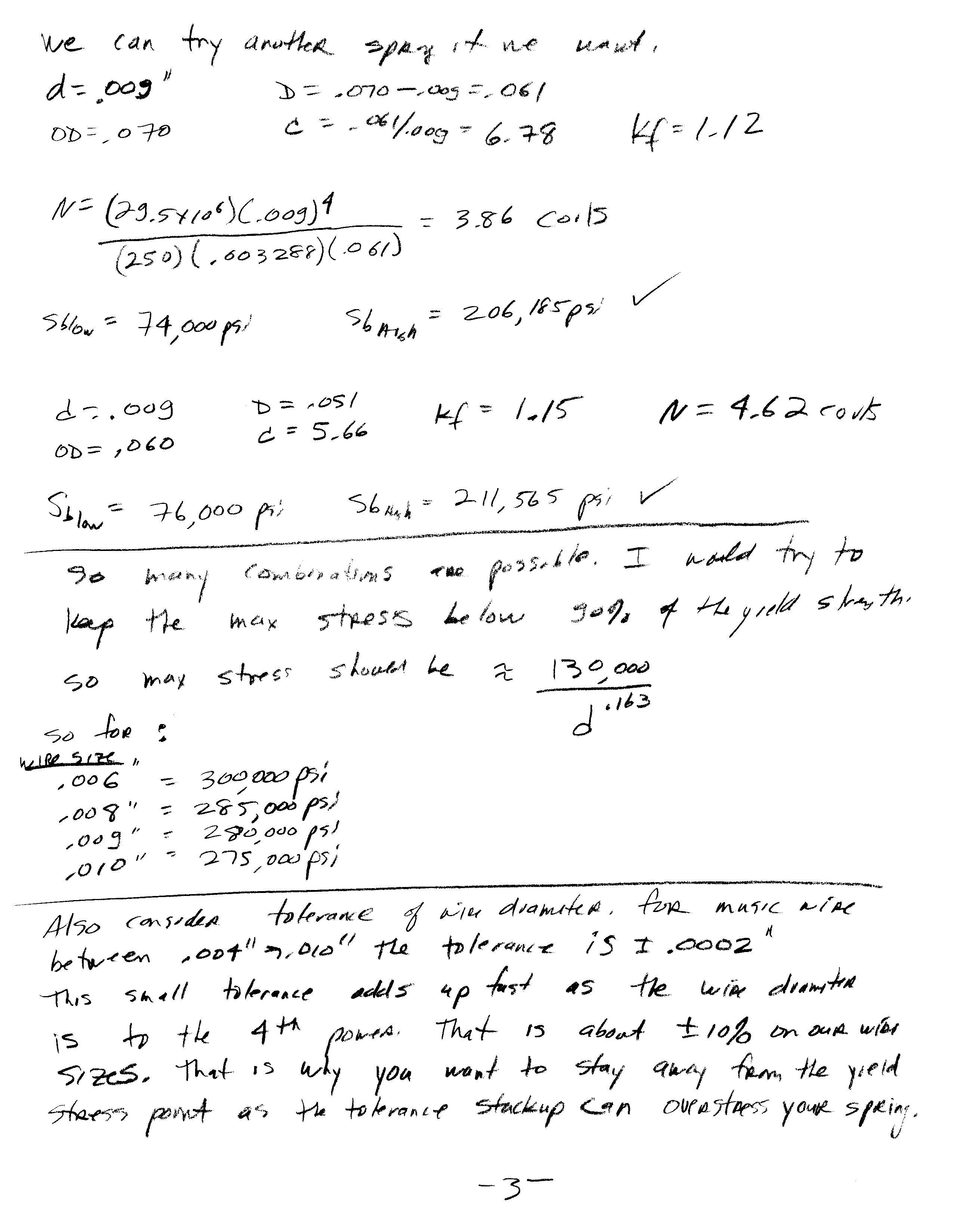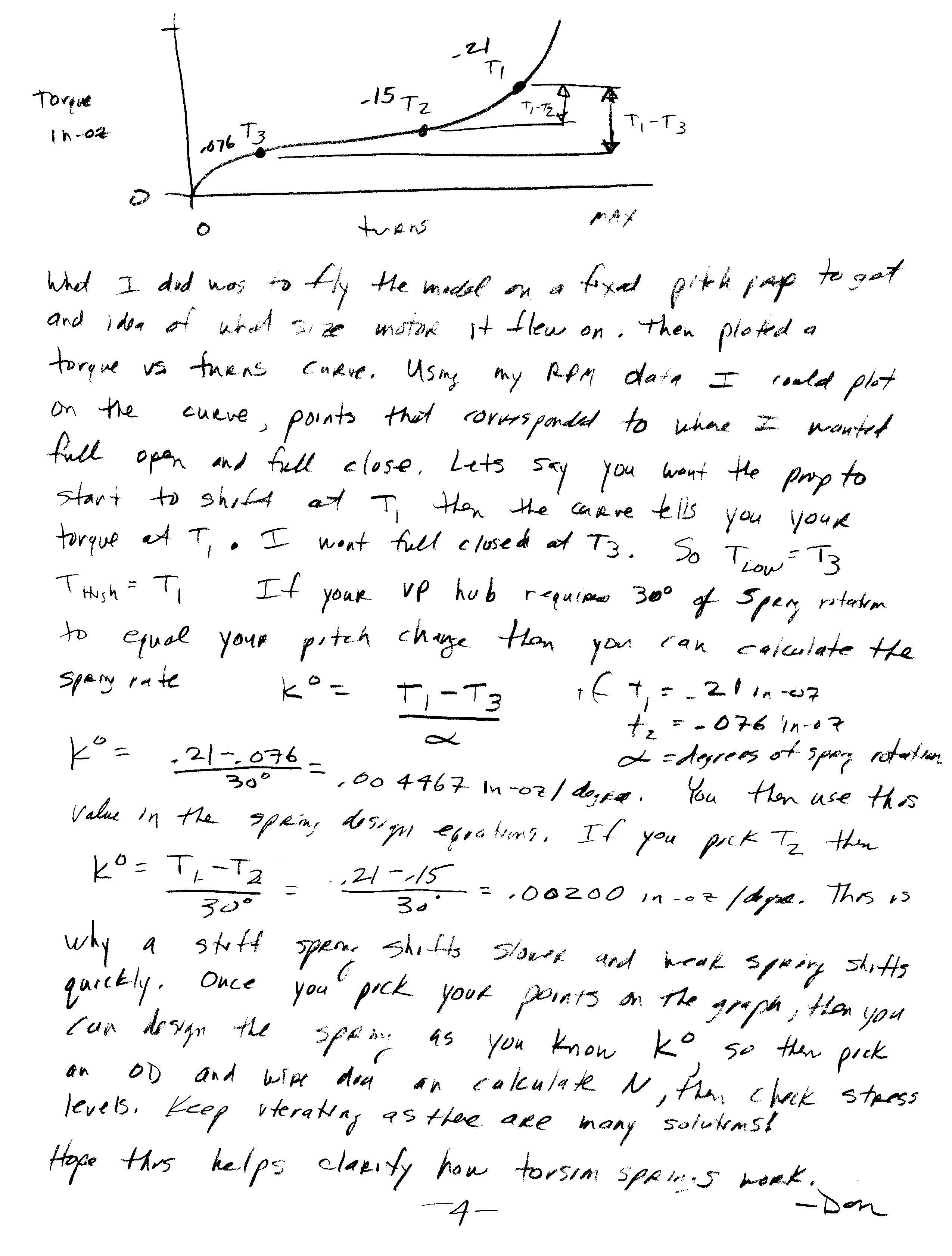Here are scanned copies of how I
approach VP spring design that I posted back on the Indoor FF mailing
list around 2005, at least that is the date of these scans. Somewhere I
have the originals I hand wrote and maybe can rescan for clarity.
Here are the individual pages in larger pixel format:
spring1
spring2
spring3
spring4
This spring design process is the
way I approach spring design. I have only made a few VP hubs over the
years. But this process is how I designed my spring for my Intermediate
Stick that I won USIC in 1999 at Johnson City. That model did 38:12 and
the spring shifted over a long period of time due to the high spring
rate I used. It has been 26 years so I do not recall exactly how long
but I think about 13 minutes of shifting. I seem to recall peaking
around 12 minutes then the prop slowly started shifting until around 25
minutes then another 13 to descend. The flight got right under the
girders at Johnson City and parked there. I think somewhere I have some
video tape of the flight. Anyhow, here are 4 pages explainting the
spring stress, soring rate, and how to calulate it. This is the same
method I will be using on my new F1M and Biplane Pennyplane.
Page 1 is in reference to a spring being overloaded. This must have
been someones VP prop spring dimensions posted on the mailing list and
I ran the calculation and found that the spring was overstressed.
Page 2 shows an alternate spring design within allowable stress limits
Page 3 shows another alternate spring design as well as some guides on stress limits
Page 4 shows the method of how I pick the values to calculate the
spring rate (in-oz/deg) I wanted a long shift range based on rubber
curve, so designed a stiffer spring than what others were using at the
time. Bernard Hunts VP on his Int Stick was using lots of coils (9 I
think) and his prop shifted quickly to lower pitch once it shifted late
in the flight.
Don Slusarczyk







